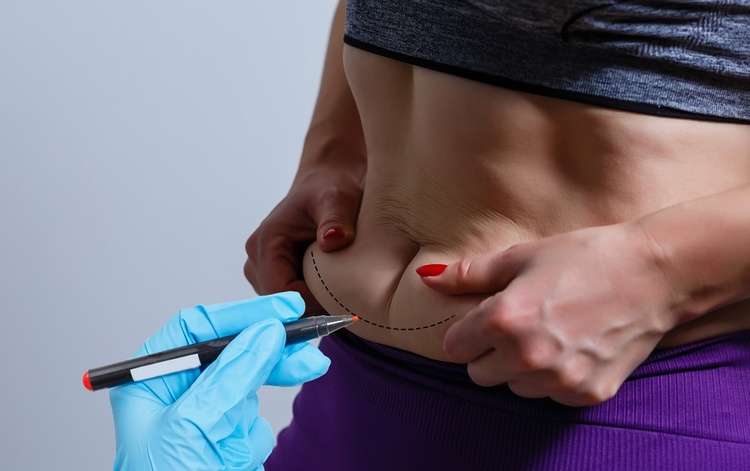Trimming Down: Surgical and Non-Surgical Belly Fat Removal Explained
In an age where cosmetic enhancements are increasingly sought after, belly fat removal has become a popular topic. From surgical procedures to non-surgical alternatives, options abound for those looking to achieve a slimmer silhouette. This article delves into the various methods available, specifically focusing on costs and non-surgical options including non-surgical liposuction in Canada.Belly fat is often one of the most challenging areas to address through lifestyle changes alone. For those considering medical intervention, there are now multiple pathways available, each with distinct benefits, risks, and price points. Whether you’re exploring surgical options or curious about non-invasive alternatives, knowing the facts can guide your decision-making process.

When traditional diet and exercise methods aren’t delivering the results you’re seeking for belly fat reduction, medical interventions can provide targeted solutions. The landscape of fat removal has evolved significantly, offering both surgical and non-surgical approaches that cater to different needs, budgets, and comfort levels.
How Does Belly Fat Removal Surgery Work?
Surgical belly fat removal primarily involves liposuction, a procedure that physically removes fat cells from targeted areas. During traditional liposuction, a surgeon makes small incisions and uses a cannula (thin tube) to suction out fat deposits. Modern techniques include tumescent liposuction, which uses a saline solution to minimize bleeding and bruising, and ultrasound-assisted liposuction for more precise fat removal.
Tummy tuck surgery (abdominoplasty) represents another surgical option that not only removes excess fat but also tightens abdominal muscles and removes loose skin. This procedure is particularly beneficial for individuals who have experienced significant weight loss or pregnancy-related changes.
What Should You Expect Regarding Liposuction Costs?
The financial investment for liposuction varies considerably based on the extent of treatment, geographic location, and surgeon expertise. In Canada, abdominal liposuction typically ranges from $3,000 to $8,000 CAD, while more comprehensive procedures can exceed $10,000. Factors influencing cost include anesthesia fees, facility charges, surgeon’s fees, and post-operative care requirements.
Recovery expectations include wearing compression garments for several weeks, taking time off work (usually 1-2 weeks), and avoiding strenuous activities for 4-6 weeks. Results become fully visible after swelling subsides, typically within 3-6 months.
What Non-Surgical Fat Removal Options Are Available?
Non-surgical alternatives have gained popularity due to their minimal downtime and reduced risk profile. CoolSculpting (cryolipolysis) freezes fat cells, causing them to die and be naturally eliminated by the body over 2-3 months. This FDA-approved treatment requires multiple sessions but involves no incisions or anesthesia.
Radiofrequency treatments use heat energy to break down fat cells while simultaneously tightening skin. Ultrasound-based procedures like UltraShape target fat cells with focused ultrasound energy. Injectable treatments such as Kybella can reduce small fat deposits, though they’re more commonly used for double chins.
These non-surgical methods typically require multiple sessions spaced weeks apart, with results appearing gradually over several months.
How Do Belly Fat Removal Options Compare Between the United States and Canada?
Cross-border differences in fat removal procedures reflect varying healthcare systems, regulations, and cost structures. Canadian patients often find more affordable surgical options domestically compared to U.S. prices, where liposuction can cost 20-40% more. However, the U.S. market offers broader access to newer technologies and techniques.
Regulatory standards differ between countries, with Health Canada and the FDA having distinct approval processes for devices and procedures. Canadian practitioners must meet specific certification requirements, and many procedures may be partially covered by provincial health plans if deemed medically necessary.
Wait times for consultations and procedures can vary significantly between regions in both countries, with urban centers typically offering more immediate availability.
| Procedure Type | Provider Example | Cost Range (CAD) | Sessions Required |
|---|---|---|---|
| Liposuction | Plastic Surgery Clinics | $3,000-$8,000 | 1 |
| CoolSculpting | Medical Spas | $600-$1,200 per session | 2-4 |
| Radiofrequency | Dermatology Clinics | $400-$800 per session | 4-6 |
| Tummy Tuck | Hospital/Surgical Centers | $8,000-$15,000 | 1 |
Prices, rates, or cost estimates mentioned in this article are based on the latest available information but may change over time. Independent research is advised before making financial decisions.
How Can You Make an Informed Decision About Fat Removal?
Selecting the right fat removal approach requires careful consideration of multiple factors. Start by consulting with qualified medical professionals who can assess your specific situation, skin elasticity, overall health, and realistic expectations. Board-certified plastic surgeons for surgical options and dermatologists or trained medical professionals for non-surgical treatments provide the expertise needed for safe procedures.
Consider your lifestyle, budget, and tolerance for downtime when weighing options. Surgical procedures offer more dramatic, immediate results but require significant recovery time. Non-surgical treatments provide gradual improvement with minimal disruption to daily activities but may require ongoing maintenance sessions.
Research potential providers thoroughly, reviewing credentials, before-and-after photos, and patient testimonials. Ensure any facility meets proper licensing requirements and maintains appropriate safety standards.
Understanding realistic outcomes is crucial for satisfaction. While fat removal procedures can significantly improve body contours, they’re not weight-loss solutions and work best on individuals already near their target weight. Maintaining results requires ongoing healthy lifestyle choices regardless of the chosen procedure.
This article is for informational purposes only and should not be considered medical advice. Please consult a qualified healthcare professional for personalized guidance and treatment.




